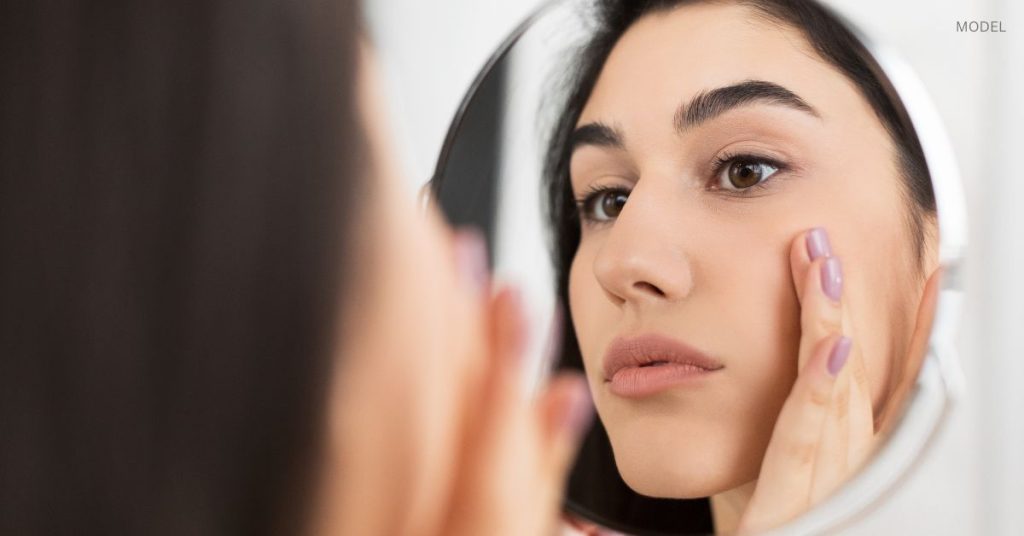Even though BOTOX and dermal fillers are popular treatment options in the quest to keep skin vibrant and youthful-looking, patients often have questions about the different types of fillers, how they work, and how long they last. This post will shed light on the procedure and dispel misconceptions about fillers, including whether BOTOX is a filler.
Dermal Filler FAQs
Are all fillers the same?
The most common fillers, such as the JUVÉDERM® and Restylane® product lines, use the same active ingredient—hyaluronic acid (HA). Hyaluronic acid is a sugar that’s naturally found in the skin. It absorbs water, so when injected, it acts like a sponge and expands to fill wrinkles and folds. Hyaluronic acid-based fillers are volumizers. Other fillers such as Sculptra® and RADIESSE® are called biostimulators because they stimulate the production of new collagen.
What do fillers treat?
Our faces lose muscle tone and fat as we age, resulting in wrinkles, folds, and fine lines. Fillers target areas of lost volume, including nasolabial folds that extend from the nose to the corners of the mouth, lines around the lips, tear troughs under the eyes, and thinning lips.
What’s the difference between fillers and prescription wrinkle treatments such as BOTOX Cosmetic® and Dysport Aesthetic®?
Even though both fillers and wrinkle treatments such as BOTOX share the goal of minimizing wrinkles, they work in different ways and address different types of lines and wrinkles. Fillers replace age-related volume loss, as mentioned earlier. BOTOX and other prescription wrinkle treatments temporarily limit the muscles we move when we change expressions. Common expression lines (also called dynamic wrinkles) include crow’s feet at the corners of the eyes, vertical worry lines between the eyebrows, and horizontal forehead lines.
Can fillers be combined with BOTOX?
Because they treat different types of wrinkles, combining fillers with injections of BOTOX or other prescription wrinkle treatments is common. This approach is sometimes referred to as a “liquid facelift.”
How long do fillers last?
It depends on the filler. Most hyaluronic acid fillers last at least 6 to 9 months, but many can last 12 to 18 months. JUVÉDERM VOLUMA®, which treats hollowed-out cheeks, can last up to 2 years. Fillers such as Sculptra can last more than 2 years.
Can you reverse the results of filler injections?
That’s possible for hyaluronic acid fillers. If you’re unsatisfied with your results, a provider can inject a soluble protein enzyme called hyaluronidase. It breaks down the hyaluronic acid, with results seen within a day or two after the injection.
Are fillers used only to reverse signs of aging?
No, younger patients get fillers to reshape or contour certain facial features. For example, fillers can create high cheekbones and slimmer jawlines. Lip augmentation with lip fillers is one of the most popular treatments performed with fillers. You can get periodic treatments to maintain the results. Learn more about the best age to start anti-wrinkle treatments in our related blog post.
Next Steps
If you are interested in dermal filler injections or other nonsurgical facial rejuvenation treatments, request a consultation using the online form or you can contact us at (905) 273-3045.


Leave a Reply